Open System Interconnection(OSI) Model
 OLPU KRISHNAVENI
OLPU KRISHNAVENI*It is a reference model that defines the how data is transferred from one computer to another computer through a physical medium.
*For example, one computer installed with windows software and another computer installed with Linux software. How these computers are connect with each other?
*To solve this problem ISO developed OSI reference model in 1984.
*OSI Model divides the whole task into seven smaller and manageable tasks.
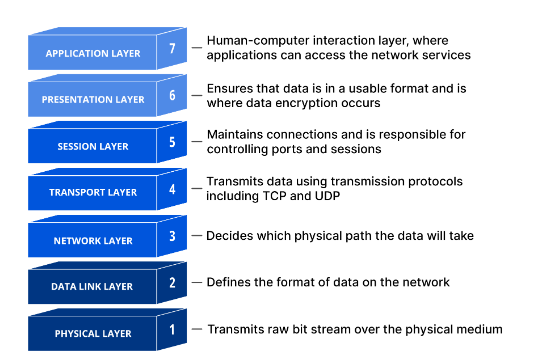
*It is also called as layered model.
1.Application layer :
*This layer contains a variety of protocols that are commonly needed by the users.
*It handles network transparency issues.
*It provides the network services to the end users.
*File transfer is done with the help of FTP protocol, Web surfing is done with the help of HTTP/S protocol, for Emails using SMTP protocol is used and Virtual terminals Telnet protocol is used.
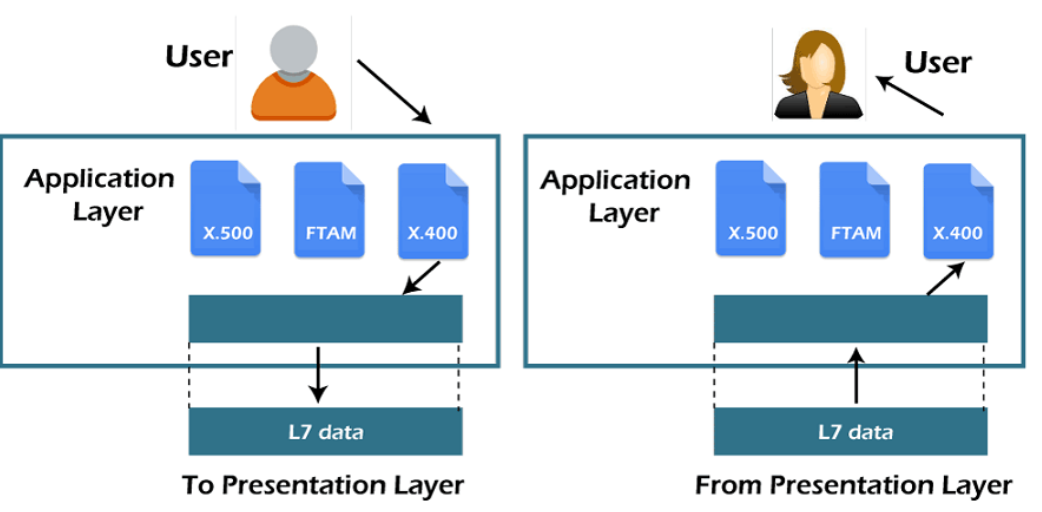
2.Presentation Layer:
*It receives the data from the application layer. This layer is concerned with the syntax and semantics of the information transmitted.
*It acts as a data translator for a network.
Here we perform three basic functions:
*Compression: We are reduces the number of bits to be transmitted.
*Encryption/Decryption: converting the sender transmitted into other form. It maintains security.
*Translation: Exchange the information in the form of character strings, numericals
with encoding methods.
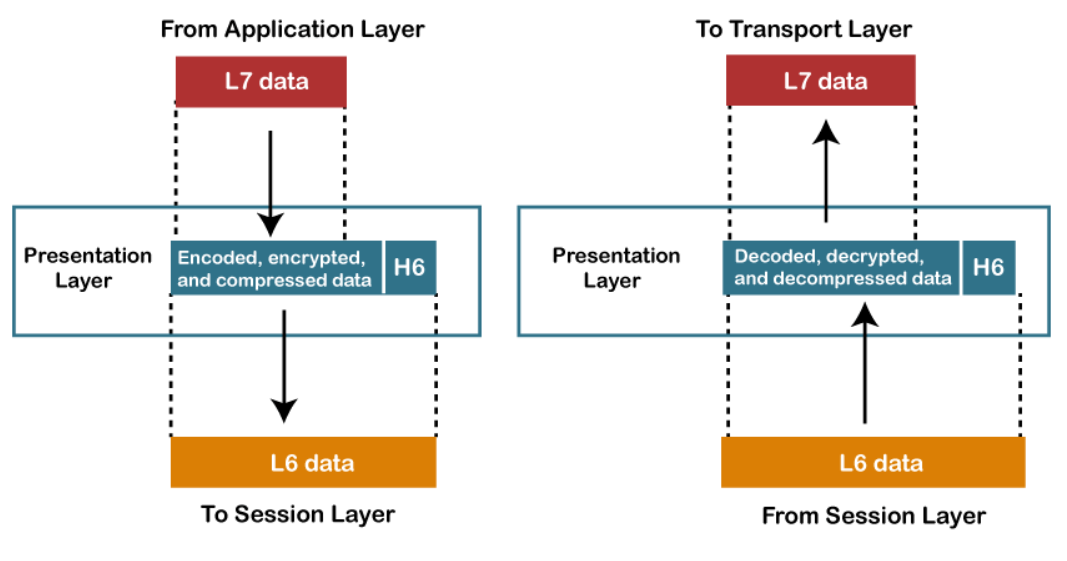
3.Session Layer:
*This layer allows users on different machines to establish session between them.
We use two basic functions:
1.Dialog Control:
Session layer acts as a dialog controller that creates a dialog between two processes or we can say that it allows the communication between two processes which can be either half-duplex or full-duplex.
2.Synchronization:
Session layer adds some checkpoints when transmitting the data in a sequence. If some error occurs in the middle of the transmission of data, then the transmission will take place again from the checkpoint. This process is known as Synchronization and recovery.
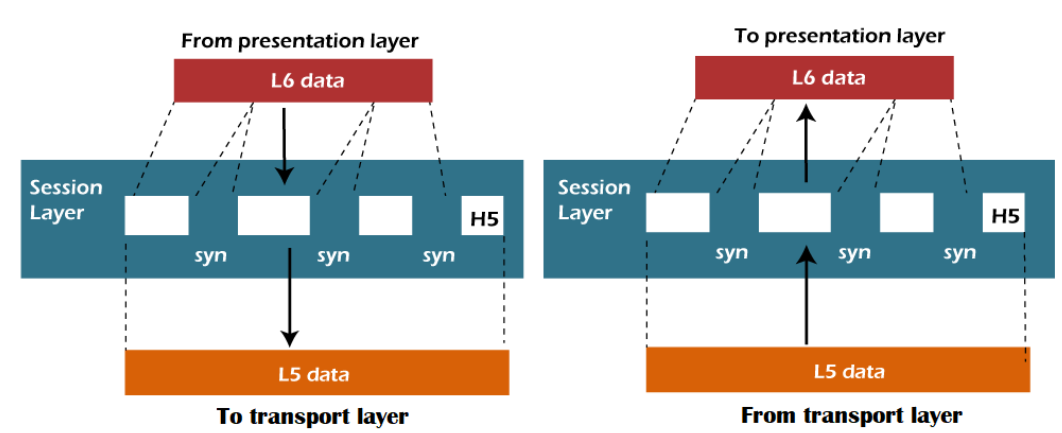
4.Transport Layer:
*The basic function of the transport layer is to accept data from the session layer, split it up into smaller units.
*The smaller units are also known as segments.
*The main type of transport connection is an realible, point to point channel that delivers messages or bytes in order in which they were sent.
In this we are using two protocols.
1.TCP/IP Protocol(Transmission control protocol)
It is a standard protocol that allows the systems to communicate over the internet.
It establishes and maintains a connection between hosts.
When data is sent over the TCP connection, then the TCP protocol divides the data into smaller units known as segments. Each segment travels over the internet using multiple routes, and they arrive in different orders at the destination. The transmission control protocol reorders the packets in the correct order at the receiving end.
2.UDP Protocol(User datagram protocol)
User Datagram Protocol is a transport layer protocol.
It is an unreliable transport protocol as in this case receiver does not send any acknowledgment when the packet is received, the sender does not wait for any acknowledgment. Therefore, this makes a protocol unreliable.
There are five basic functions we are used.
1.Service-point addressing: To transmit the message in correct process this layer adds the header that contains service-point address or port address.
2.Segmentation & Reassembling: This layer divides as segments and gives some sequence number to identify, after sending process receiver reassemble the all segments.
3.Error control: The transport layer is also responsible for Error control. Error control is performed end-to-end rather than across the single link. The sender transport layer ensures that message reach at the destination without any error.
4.Flow control: The transport layer also responsible for flow control but it is performed end-to-end rather than across a single link.
5.Connection control: Transport layer provides two services Connection-oriented service and connectionless service. A connectionless service treats each segment as an individual packet, and they all travel in different routes to reach the destination. A connection-oriented service makes a connection with the transport layer at the destination machine before delivering the packets. In connection-oriented service, all the packets travel in the single route.
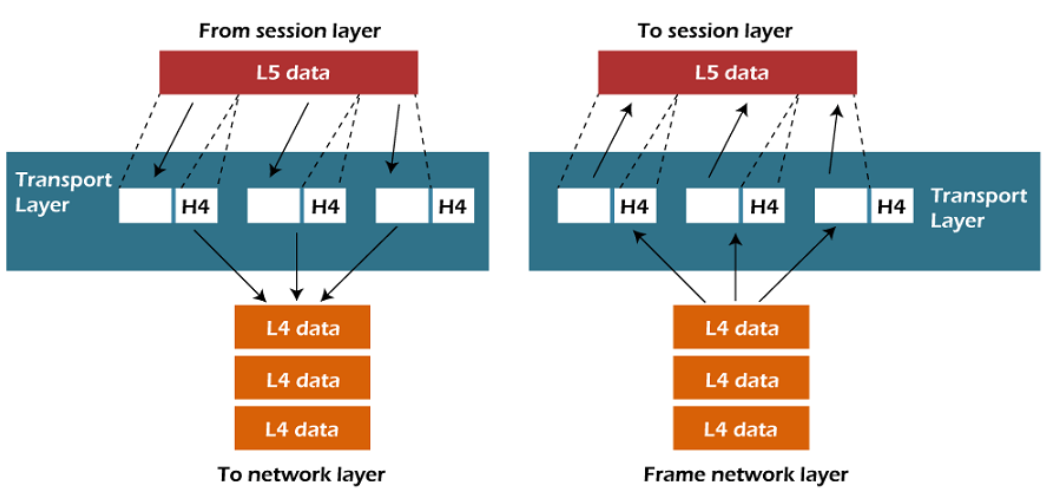
5.Network Layer :
*This layer works for the transmission of data from one host to the other networks.
*It is responsible for packet routing.
*It is the best path to move data from source to destination. Routing means selection of shortest path to transmit the packet, from the number of routes available.
*In header both senders & receivers IP Address are placed.
We are using basic functions.
1.Routing: It is useful for which route is suitable from source to destination.
2.Internet working: It provides a logical connection between other devices.
3.Logical Addressing: To identify every device uniquely, this layer defines an addressing scheme.
4.Packetizing: From transport layer receives the packets and it converts into packets.
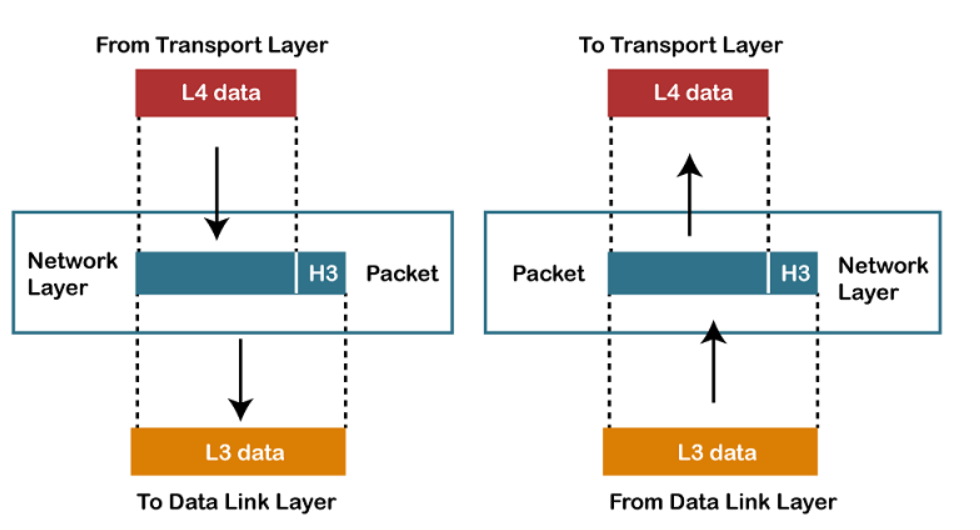
6.Data link layer:
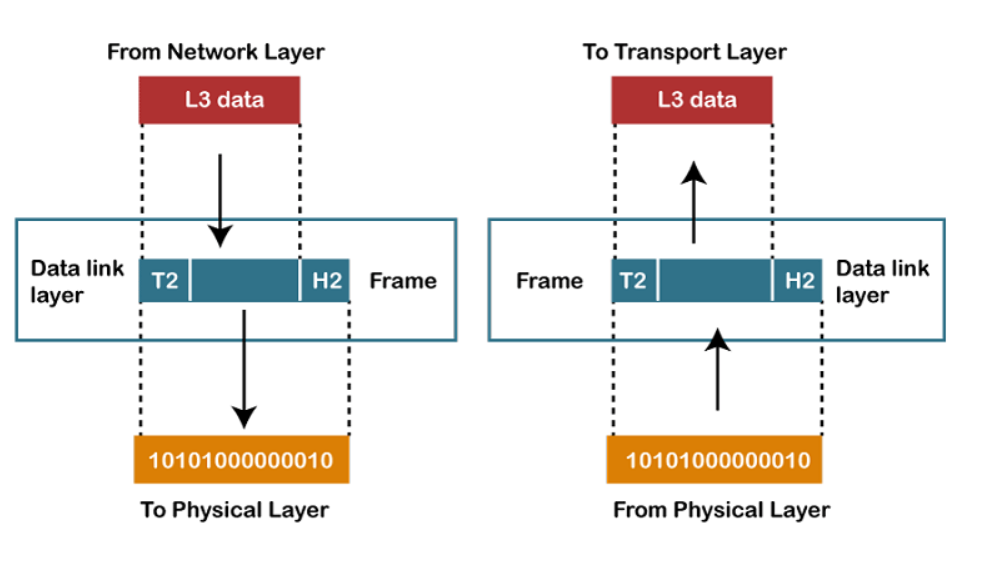
*Data link layer is responsible for the error free transfer of data frames.
*This layer also performs to encode, decode and organize the both data.
Sublayers of Data link Layer:
1.Logical link layer(LLC) :
*It is deals with multiplexing.
*The flow of data among applications & services.
*providing error message & responses.
2.Media access Control layer(MAC):
*It links between the logical link control layer & network physical layer.
*It is used for transferring the data like packets over the network.
Basic functions of Data link layer:
1.Framing: The data link layer translates the physical's raw bit stream into packets known as Frames. The Data link layer adds the header and trailer to the frame. The header which is added to the frame contains the hardware destination and source address.

2.Physical Addressing: The Data link layer adds a header to the frame that contains a destination address. The frame is transmitted to the destination address mentioned in the header.
3.Flow control:Flow control is the main functionality of the Data-link layer. It is the technique through which the constant data rate is maintained on both the sides so that no data get corrupted. It ensures that the transmitting station such as a server with higher processing speed does not exceed the receiving station, with lower processing speed.
4.Error control:Error control is achieved by adding a calculated value CRC (Cyclic Redundancy Check) that is placed to the Data link layer's trailer which is added to the message frame before it is sent to the physical layer. If any error seems to occurr, then the receiver sends the acknowledgment for the retransmission of the corrupted frames.
5.Access control: When two or more devices are connected to the same communication channel, then the data link layer protocols are used to determine which device has control over the link at a given time.
7.Physical Layer:
*The main functionality of the physical layer is to transmit the individual from one node to another node.
*It receives the bits from the data link layer and transmit those bits to the another node.
*It establishes, maintains & deactivates the physical connection.
*Mechanical, electrical and procedural network interface specifications specified by physical layer.
Functions of Physical Layer:
1.Line configuration: It defines the way how to two or more devices can be connected physically.
2.Data transmission: It defines the transmission nodes between the two devices.
3.Topology: It defines the topology how network devices are arranged.
4.Signals: It determines the type of the signal used for transmitting the information.
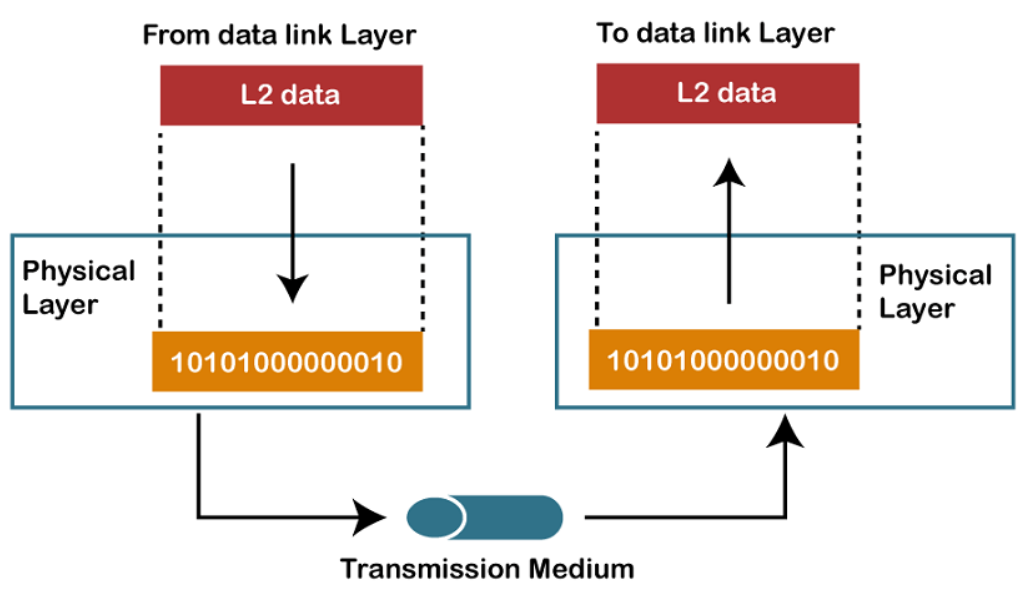
Subscribe to my newsletter
Read articles from OLPU KRISHNAVENI directly inside your inbox. Subscribe to the newsletter, and don't miss out.
Written by
